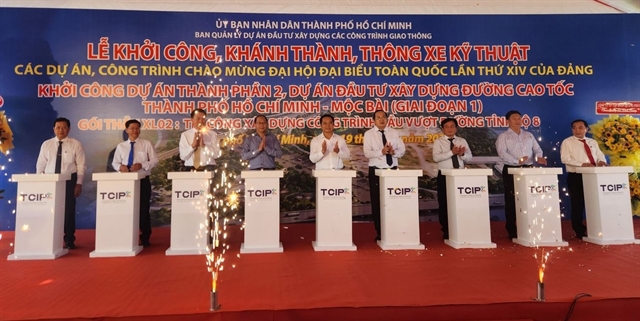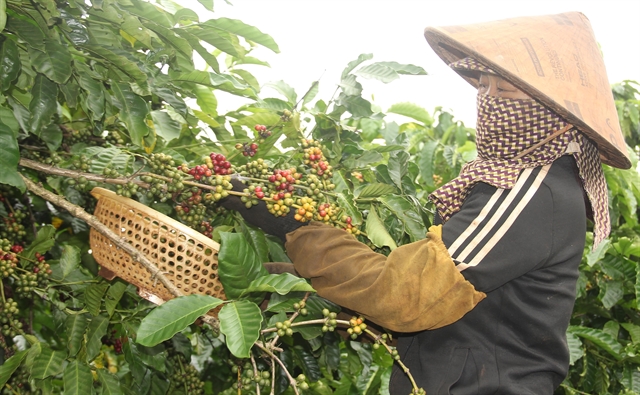 Economy
Economy

The Tây Nguyên (Central Highlands) provinces should work together to develop coffee brand names and large-scale cultivation, Lê Minh Hoan, Minister of Agriculture and Rural Development, has said.

|
| Harvesting the 2020 – 21 coffee season in Gia Lai Province. The Tây Nguyên province is entering the peak coffee harvest season. — VNA/VNS Photo Hồng Điệp |
GIA LAI — The Tây Nguyên (Central Highlands) provinces should work together to develop coffee brand names and large-scale cultivation, Lê Minh Hoan, Minister of Agriculture and Rural Development, has said.
Speaking at a seminar held in Gia Lai Province on Sunday, Hoan said to further develop coffee exports, the provinces should rethink the cultivation, harvest and processing of coffee to adapt to climate change and the demand for "green" consumption.
The Tây Nguyên region, which includes Lâm Đồng, Đắk Nông, Gia Lai, Kon Tum and Đắk Lắk, has 639,000ha of coffee, accounting for 92 per cent of Việt Nam’s total coffee area.
Its coffee has had an average yield of 28.5 tonnes per hectare a year, up 1.1 times against the country’s average coffee yield. However, the region’s coffee production and consumption has small scale and scattered cultivation and production.
Võ Ngọc Thành, chairman of the Gia Lai Province People’s Committee, said only 3.5 per cent of the province’s coffee output involves deep processing and the rest receives only initial processing and is sold raw.
The added value of the province’s coffee products, therefore, is low and the province has not had strong coffee brand names to compete with other brand names on the market.
Gia Lai has more than 700,000 households and organisations that grow coffee on a total area of 98,400ha.
In Đắk Lắk Province, the country’s largest coffee producer, 107,000ha of its total 210,000ha of coffee have received a “Buôn Ma Thuột coffee” geographical indication, according to its Department of Agriculture and Rural Development.
However, the “Buôn Ma Thuột coffee” geographical indication has not provided significant added value because the amount of exports has not been large.
Representatives of Tây Nguyên provinces at the seminar said the provinces are facing the impact of climate change, high prices of input materials, and shortages of infrastructure and labourers for coffee cultivation and processing.
Most coffee growing areas are planted by individual farmers on small farms. The linkages among farmers and companies are weak and the capacity of coffee farmers, farms, co-operatives and co-operative groups is limited.
Hoan said the ministry would continue implementing the Việt Nam-Sustainable Agriculture Transformation (VnSAT) Project and other projects in the region to develop sustainable coffee production.
The ongoing VnSAT project aims to improve the competitiveness of the agriculture sector, especially rice and coffee, to increase income for farmers and reduce the environmental impact of agricultural production.
Under the ministry’s pilot project to develop farming areas for agricultural and forestry products that meet standards for export and domestic sale in 2021 - 25, coffee is one of the country’s five key products.
Hoan said the EU is a potential export market for Việt Nam’s coffee products.
However, after the EU – Việt Nam Free Trade Agreement (EVFTA) came into effect in August 2020, Việt Nam’s coffee exports to the EU have achieved a very small market share.
“EVFTA offers us a big opportunity. The ministry will develop a project to export agricultural produce to the EU,” he said.
Việt Nam exports coffee products to more than 80 countries and territories, accounting for 20 - 22 per cent of the world’s total coffee export revenue. — VNS